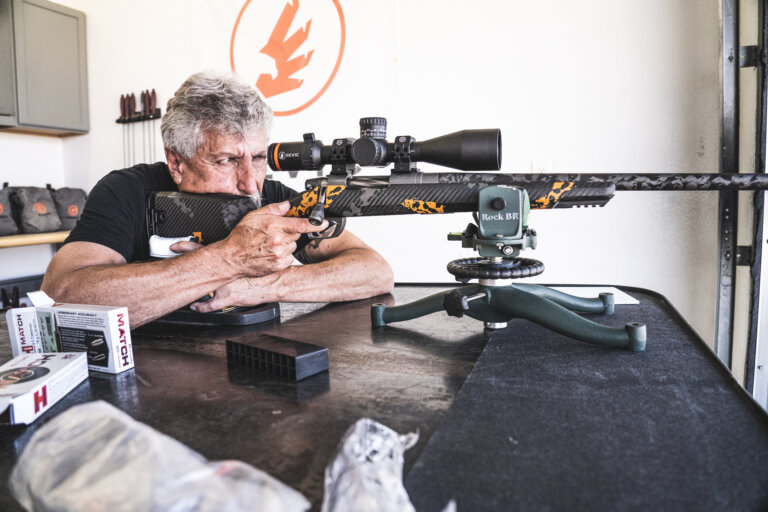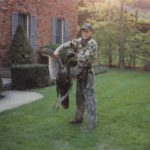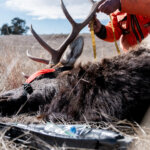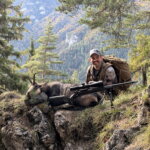You last heard from me on August 3 in my article titled Practical Long-Range Shooting about my plans to attend the Gunwerks Long Range University. Well, I’m back from my trip to the Gunwerks classroom and range and here is my report. You could title it “What I Did on Summer Vacation.”
I was going to say that I can’t begin to explain what our class learned, but I’m going to try to get it down while it’s fresh in my mind. Unfortunately, I had to cut my experience short due to a family emergency, but I’ll dive into the class days I attended. UNBELIEVABLE doesn’t start to describe it. Maybe the best way to start is to explain the experience in chronological order. Here goes.
The Long Range University 101 class (LRU-101) began when I pulled up to the state-of-the-art shooting facility in Burlington, Wyoming, a 30-mile drive from Gunwerks’ headquarters in Cody. I was greeted by an efficient and detail-oriented team member, Camie, and I filled out a simple form and was escorted to the classroom.
I immediately felt the Gunwerks ambiance when I walked into the classroom. Long-range shooting systems were stockpiled against the back wall and ammo was stacked by the pallet. Our two instructors, Brian Poor and Jeremy Winters, are experienced, to say the least.
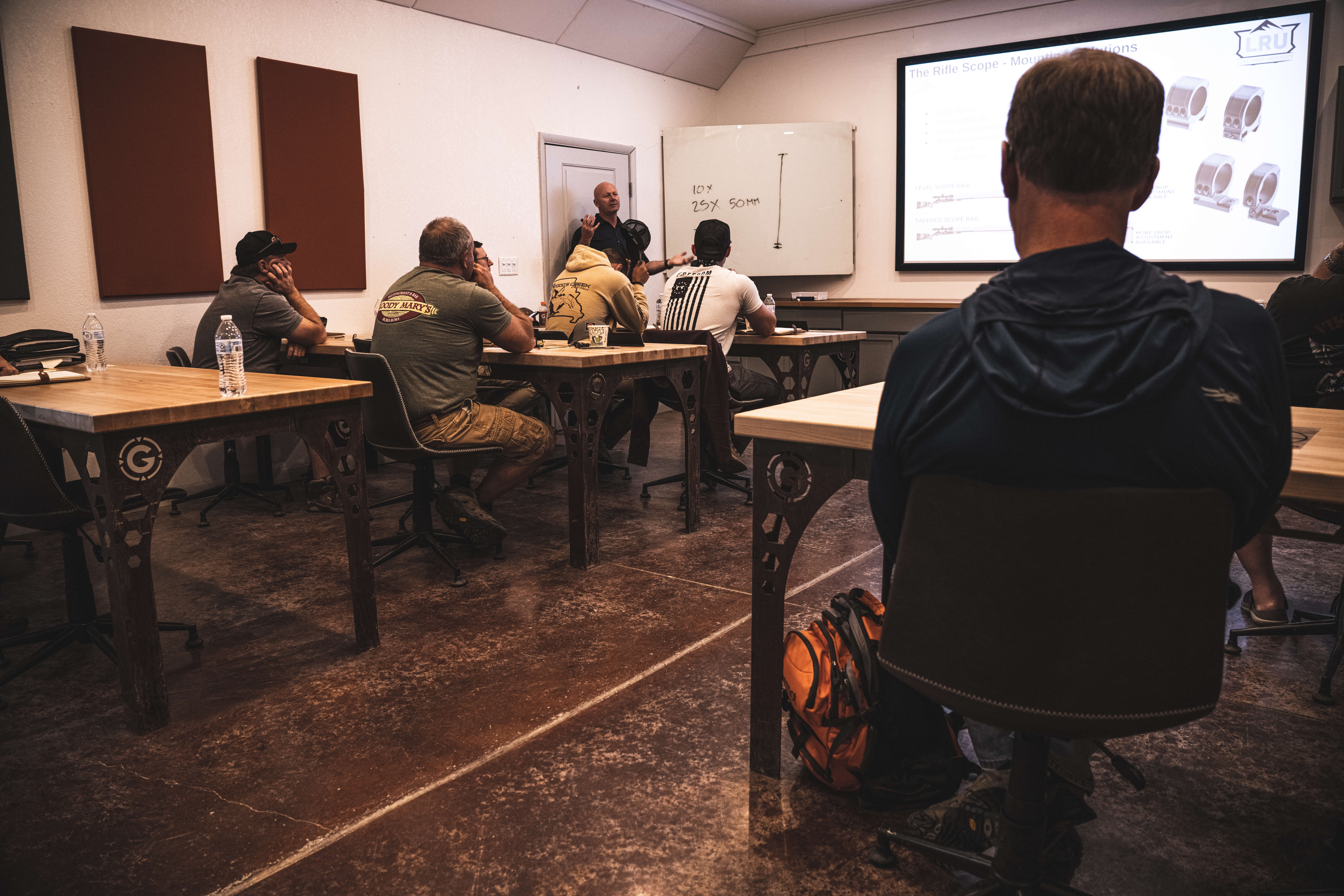
As they began instruction, I sensed that both have an abundance of long-range knowledge from their past. They fed off each other to present a complete, educational experience. They are an invaluable duo and we were lucky to learn from them.
As students arrived and introduced themselves, we found that our group had gathered from the East Coast to the West Coast, all hunters of deer, elk, bear, and international game. Twelve hunters who were as diverse as the hunting world could offer, all looking to gain knowledge about ethical long-range shooting. Day 1 started with a few hours of class time. Our discussion began with an in-depth look at parallax, its effect on bullet placement, and more importantly, how to eliminate it. We then dove into MOA, MILS, BDC turrets, zero stops, reticles, the importance of scope tracking, scope technology, and manufacturing processes of first focal plane and second focal plane scopes.
After a quick break we continued our long-range optics discussion about metal gears versus plastic gears, magnification ranges, scope-mounted levels, and the various scope-mounting methods (direct mount, unity mounts, tapered rail scope mounting, etc.) I learned more in three hours of in-person classroom instruction than I had in 30 hours of reading and researching on my own. Having an in-person instructor to clarify points and answer questions was invaluable.
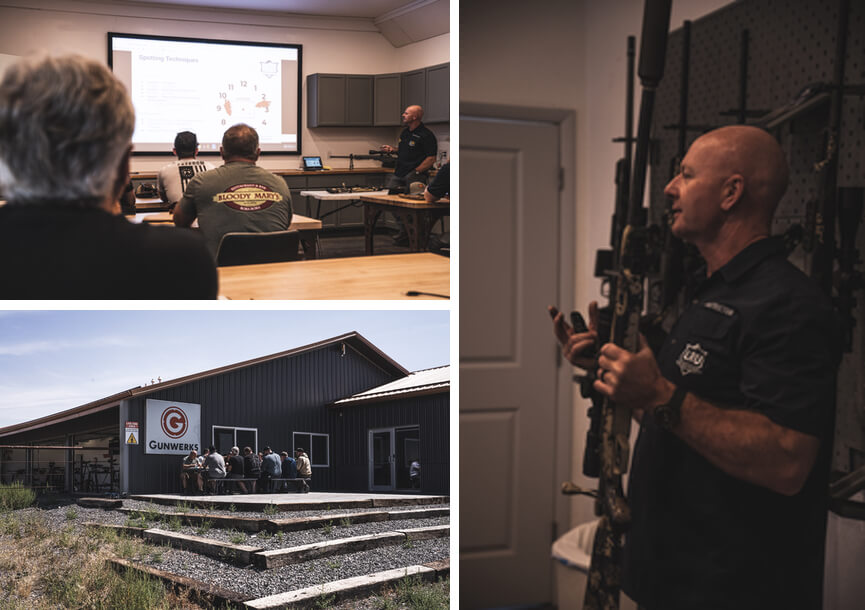
You may remember my first article mentioned this axiom, “We don’t know what we don’t know.” Well, these instructors know. They were masters at delivering their knowledge and making sure everyone understood each subject before moving on to the next. I already felt a confidence I never had and we hadn’t yet fired a round. We finished off the first morning with a discussion about rifle systems and manufacturing aspects. To say this is rocket science is an understatement. We discussed actions, feeding, extracting, angle of ejection, field-serviceable bolts, double-plunger ejectors, integral lugs, custom triggers, and tapered firing pins. All of this was followed by an in-depth look at stock design: vertical grips, thumb shelves, comb lines, and negative stock angles. Then we covered carbon-fiber barrels, their manufacturing, heat dissipation, barrel harmonics, bi-directional breaks, suppressors, and barrel length including a long discussion about short barrels.
Hearing this, you can imagine the tens of thousands of engineering hours that have gone into these new technology shooting systems. It was awesome to have the instructors explain where systems were 20 years ago, and how they have evolved to what they are at Gunwerks now. Let me put it this way: these aren’t your Dad’s .30-06 Winchester Model 70s. Investing just these few hours of time gave me insight into long-range shooting history, development, and technology available in current optics and rifle systems. This background and instruction flowed into the next part of the class, the actual long-range shooting. It was time to apply what we’d learned.
After lunch, we walked out the side door of the classroom and were looking at multiple shooting benches geared with ear protection, shooting bags, Revic spotting scopes, Gunwerks Magnus 6.5 Creedmoor rifle systems, and boxes of ammo. We received a quick lesson on range rules and safety, and then paired off into teams with one shooter and one spotter. The first shooting exercise covered correct shooting posture, rifle system basics, bag use and placement, muscles used to shoot, and how it all affects shot placement. This is important because these mechanics need to be duplicated time and time again for consistent down-range bullet placement. Next, each shooter verified that their 6.5 was dead on at 100 yards. All teams commented that the groups we shot were tighter than anything we had ever shot in the past. We all fired our rifle’s four rounds to produce four-shot groups from quarter size down to nickel size. We then branched out and shot at approximately 400, 635, 840, and 965 yards, with our instructors calling the wind.

Every shooter had an impact at the 965-yard target, which was amazing because many of us had never shot at that distance before. At this point, we went back in the classroom and learned a ton about the Revic app and creating a ballistic profile that can be synced to one of the Revic rangefinders or the new Revic BLR10B binoculars.
I can honestly say that everything was starting to click. Going back to my first article, I mentioned how my buddies and I would hit the range and shoot well out to about 400 yards, then the wheels would come off. Again, it was a case of “We didn’t know what we didn’t know.” In just one short day, I already recognized several of the errors we’d been making. To name a few of the points we were missing: adjusting for parallax, using a leveling device on your scope (vitally important), having a scope with impeccable tracking ability, learning to shoot MOA rather than yardage, employing correct shooting posture, pinning the trigger, using a rear shooting bag, and following a tried-and-true shooting process including appropriate posture, proper stock placement on the shoulder, correct finger placement on the trigger, and breathing techniques.
But back to the Revic app. We were entering a ballistic profile for the specific gun, scope, ammo, and atmospheric conditions, and then truing up our data with a range test.
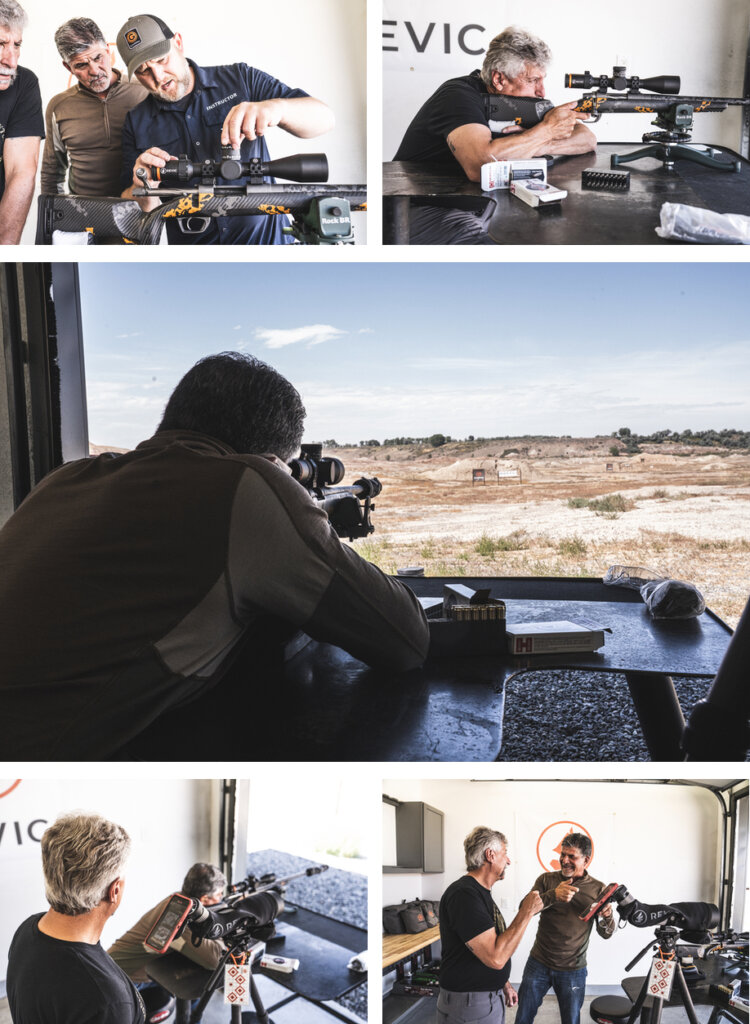
We didn’t want to just hit a target at 400, 600, or 800 yards. We wanted to fine tune to pinpoint accuracy at those ranges. You don’t want to just “hit” an animal at 600 yards. You want a lethal hit in the boiler room at that distance. We entered the necessary data, the app grabbed info from the nearest weather station, and at that point we entered exact yardage. Then the app told us where to dial the turret in MOAs. We shot at the 400-yard target and got a pinpoint feel of where we hit, not just a hit on target…a pinpoint hit. By determining if we were consistently high or low, and how the group looked, we could return to the app and true up the data to match the particular impact points. This is a dumbed-down version of truing, but it details the overall points. After this, the profile could easily be downloaded to the Revic rangefinder or binocular, and we were set for a simple click-shoot solution!
We were enlightened about the Gunwerks shooting systems and the immense engineering and technology that goes into creating a shooting “system.” It’s not just taking a gun that you think is accurate enough and then mounting a scope with a turret on it. Yeah, this can work out to that 300-yard mark. But to have a proper long-range system and make ethical long-range shots at animals, everything has to work together.
We learned history, theory, volatility of ballistics, atmospheric conditions, manufacturing logistics and issues, correct shooting techniques, etc. And it all boiled down to this: simple and accurate point-click-dial-shoot is available to anybody! I am a 100% believer in the benefits of taking this long-range class from Gunwerks. You will gain knowledge and skill you never thought possible and you will feel confident for those longer shots, allowing cleaner ethical taking of game at these greater distances.

We also got a tour of the Gunwerks plant and home offices. Our whole class met at the Cody location and we were treated to a behind-the-scenes look at Gunwerks’ brand-new, state-of-the-art manufacturing facility. The tour included a look at the optics-mounting area, in-house rifle testing and tuning rooms, ammo loading stations, carbon barrel wrapping room. We even watched actions and barrels being made from raw steel, titanium, and aluminum on the top-end CNC machines. There is a room for manufacturing stocks from A to Z, from pouring and molding all the way to the application of the diamond-tough finishes. Each area was unbelievably clean with a calculated progression starting with the customer’s exact specifications for building a rifle system and ending at the final testing area to check for accuracy and overall quality. As we exited the shipping room we entered the main show room where every product is available to be held, examined, and coveted, including all the Revic optics, bi-pods, and other accessories. Let’s put it this way, they basically had to kick the group out of this room at the end of the tour because it is a rifle enthusiast’s paradise.
Overall, I was able to soak up a wealth of information and I was extremely pleased with my progress from a first-time student. On day one, I was unable to consistently shoot past 400 yards. I became a much more confident shooter, feeling comfortable making shots out to distances beyond 900 yards. I’m certain that this course will help me and the group on our future hunts! My feedback on this course summed up in two words: Highly Recommend!
